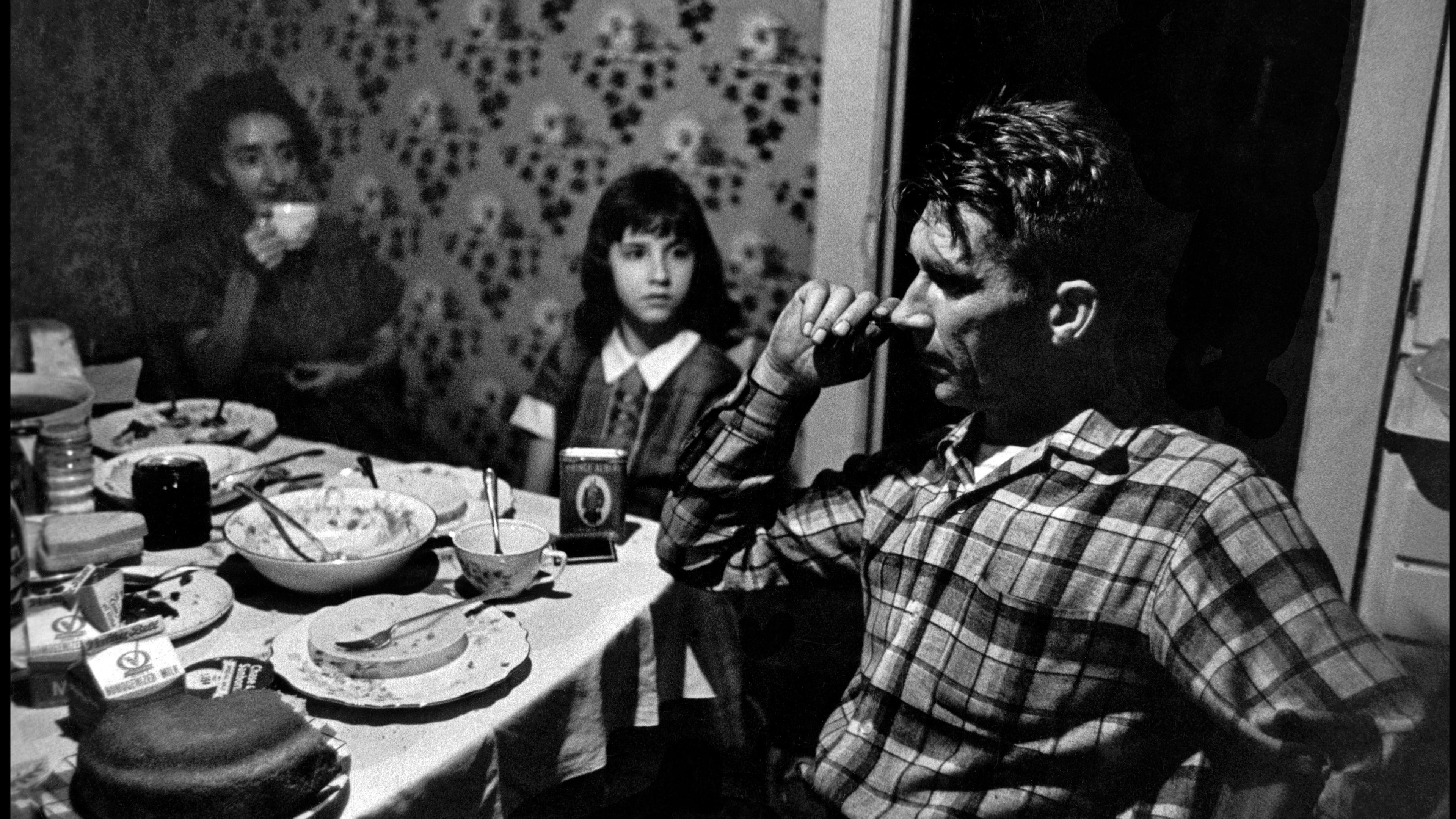In 1965, an article entitled ‘Poverty and Social Change’ appeared in the magazine Scientific American. It introduced readers to a tiny rural community in Nova Scotia, Canada, nicknamed ‘the Road’.
The Road, among the poorest communities in its county, was a part of the Stirling County Study – one of the largest and longest psychiatric epidemiology studies ever conducted. The article’s author, Alexander Leighton, had co-founded the Stirling County Study in 1948 with his then-wife, Dorothea Cross Leighton. By evaluating the inhabitants of the Road and other communities, the researchers hoped to draw connections between socioeconomic factors and mental health.
The Road’s residents had long occupied the bottom rung of the social ladder. Their community was characterised by brawling, heavy drinking, marital breakdown, child neglect and, as highlighted by illustrations in Leighton’s article, substandard and poorly maintained housing.
Teams of social scientists and psychiatrists such as the Leightons – who became known as social psychiatrists – found that rates of mental illness were highest in deprived communities such as the Road. The Stirling County Study and others like it demonstrated that mental illness was associated with poverty, inequality, social isolation and community disintegration (which involved factors such as crumbling civic infrastructure and a lack of groups that bind a community together). In interviews, the people from the Road and other such communities revealed how their lack of financial resources and low socioeconomic status left them feeling anxious, depressed and hopeless. Compared with more fortunate individuals, impoverished people were also more likely to be diagnosed with psychosis, and to be prescribed invasive treatments such as electroconvulsive therapy, insulin shock therapy, and even lobotomy, as opposed to psychotherapy.
With its focus on the social environment, the work of social psychiatrists contrasted with two other approaches to mental health that were prominent at the time – psychoanalysis, with its focus on psychotherapy, and biological psychiatry, with its focus on drugs and other somatic treatments. Emerging in North America during the middle of the 20th century, social psychiatry built on the earlier ‘mental hygiene’ and ‘child guidance’ movements, which also emphasised the role of socioeconomic factors, but lacked a basis in scientific evidence.
Social psychiatry’s largely forgotten story is one of mixed success. Its ultimate goal was not only to identify socioeconomic factors in mental health, but to produce policy recommendations that would result in the prevention of mental illness. Here is where mental health research brushed up against politics. Social psychiatrists excelled at establishing the link between socioeconomic problems and mental health problems. They fared poorly at advising what should be done about it.
At times, this was because social psychiatrists did not feel ready to make such policy pronouncements. They wanted to ‘get it right’. This was the case for the Midtown Manhattan Study, which examined mental health in New York City during the 1950s. While the resulting book, Mental Health in the Metropolis (1962) edited by Leo Srole et al, spent 50 pages discussing the project’s methodology, it spent fewer than 50 words contemplating the ramifications of the study.
Others did not think it was appropriate for researchers to be drawn into policy discussions, let alone politics. Most social psychiatry research coincided with the height of McCarthyism in the US, and anything that smacked of socialism was liable to be scrutinised and condemned. This would include the kinds of socioeconomic policies for reducing poverty and inequality, whose importance was implied by the findings of social psychiatrists.
In some cases, however, social psychiatrists simply missed the mark, placing the blame for mental illness on the poor themselves. Such was the case in Leighton’s article about the Road, which located the problem not so much in poverty, but in the poor. The people who lived in the Road were denigrated by those in nearby communities, who assumed they were ‘mentally retarded’. But the researchers behind the Stirling County Study described the residents of the Road and other impoverished communities in unflattering terms too. They depicted them as dirty, uncouth, rude, licentious, reckless, suspicious and even hostile. The middle-class, highly educated researchers wrote about these people as if they were not just a class apart, but a different type of people altogether.
When residents of the Road were first studied during the early 1950s, they were found to suffer from far worse mental health than other residents of the county. Remarkably, however, the situation had improved markedly by the early 1960s. Why?
Although new employment opportunities had alleviated the community’s chronic poverty, Leighton downplayed this factor. Instead, he suggested that the people themselves had changed: the introduction of an adult education programme and the consolidation of the Road’s school with one representing a wealthier community provided both the adults and the children with the manners, skills, language and even clothes that allowed them to function more effectively in society. These developments, the thinking went, had transformed the Road’s residents from people who dismissed the value of work and distrusted authority into upstanding citizens. Their mental health, Leighton implied, had benefited as a result.
While it is likely that the educational improvements did make a difference, Leighton’s decision to emphasise those, and not the economic improvements that had also occurred, shows how he and other social psychiatrists were reluctant to propose (let alone demand) radical socioeconomic change. His explanation suggested that something was fundamentally wrong with the poor themselves, something that went beyond socioeconomic circumstances. Here, his views mirrored the approach to the ‘war on poverty’ declared by the US president Lyndon Johnson in 1964. The ‘war’ involved fighting a battle against the so-called culture of poverty. This kind of thinking suggested that you could not merely lift the poor out of poverty by giving them more material resources; they would simply waste whatever was given to them.
Something that social psychiatric research did help to achieve was a shift to community mental health. By the 1950s, pressure was building to move mental health care from psychiatric hospitals or asylums to community mental health centres. These centres were not meant to be merely treatment clinics: they were also envisioned as centres for preventive psychiatry, helping to eliminate root causes of mental illness, protect those at risk, and prevent relapse. Some community mental health centres developed innovative approaches intended to prevent mental illness. One notable example was the hiring of so-called ‘indigenous paraprofessionals’ in the South Bronx in New York City during the 1960s – local community members who served as the bridge between the white, middle-class mental health care staff and the typically nonwhite and poor community it served, and who sought to work with clients’ families and authorities to address clients’ root problems.
But such interventions could go only so far in addressing the socioeconomic challenges facing community members. Community mental health centres could not keep a factory open or prevent cuts to the welfare system. The drive toward preventative measures to improve mental health was hamstrung by the unwillingness or inability of politicians to address the factors that social psychiatrists had identified as contributing to mental illness. What was really required was to eliminate poverty, reduce inequality and racism, and improve community integration.
By the 1980s, social psychiatry had been eclipsed by biological psychiatry, which emphasised genetic and neurological explanations, and prioritised psychopharmaceutical treatment. With drugs, there was thought to be less need for prevention.
Social psychiatrists missed an opportunity to articulate the real policy implications of their research, namely, that progressive social change was required to prevent mental illness. Historians who have examined social psychiatry have often downplayed its significance and relevance. I argue, in contrast, that we need to revisit the findings of social psychiatrists – and, if we want to prevent mental illness today, we need to do something about them.
In recent years, experts have turned once again to social factors in mental health. The financial crunch of the late 2000s and the COVID-19 pandemic, along with dissatisfaction with psychopharmacology, have once again made social psychiatry relevant, though rather than speaking about ‘social psychiatry’ as a discipline, we tend to refer to research on the ‘social determinants of mental health’.
Mental health researchers today are much less likely to respond judgmentally to their research subjects. Yet they are still often reluctant to stress the political implications of their findings. The temptation might be to simply conduct more research. But there is already more than enough evidence to know that socioeconomic deprivation is bad for mental health. In addition to the classic studies, subsequent research – such as that conducted and disseminated by Richard Wilkinson and Kate Pickett – has further cemented this link. What mental health researchers, clinicians and activists need to do now is what social psychiatrists failed to do: to tackle poverty, inequality, racism, community disintegration and social isolation head-on.
One possible approach to the problem would be to introduce a universal basic income. Such a guaranteed income would lift people out of poverty, provide opportunities for social mobility, and allow people to re-engage with their communities. In fact, a version of universal basic income was described in one of the few publications to recommend preventive mental health strategies during the 1960s: Crisis in Child Mental Health: Challenge for the 1970s (1969) from the US Joint Commission of Mental Health of Children. The Canadian health economist Evelyn Forget subsequently found that mental health was improved during a basic income pilot in Manitoba during the 1970s. And a recent meta-analysis has also indicated that guaranteed-income programmes often result in mental health improvements.
Universal basic income is just one potential initiative. Many more preventive mental health policies could be introduced, some of which could benefit physical health as well. For instance:
- Medical researchers today are rediscovering the links between food and mental health. Policies to subsidise the provision of healthy, locally produced food could not only reduce food poverty but also potentially improve individual wellbeing.
- Drastically reducing the cost of post-secondary education (or eliminating tuition fees altogether, as has been done in Scotland, where I live), along with investing in education in deprived communities, could enhance social mobility and reduce the sense of hopelessness experienced by many young people.
- Finally, there is evidence that giving people – no matter what their background – the opportunity to spend time in nature could improve mental health. That might happen via better public transportation, access to bicycles for those who cannot afford to buy them (and the creation of more bicycle paths), and measures to expand parkland and other natural areas in and around cities.
The real priority is a shift in mindset, one that forces us to confront the politics of mental health much more directly than social psychiatrists did in the past. If we are not thinking about mental health in political terms, we are hardly thinking about it at all. And, ultimately, if we are serious about preventing mental illness, we need to consider political solutions.








